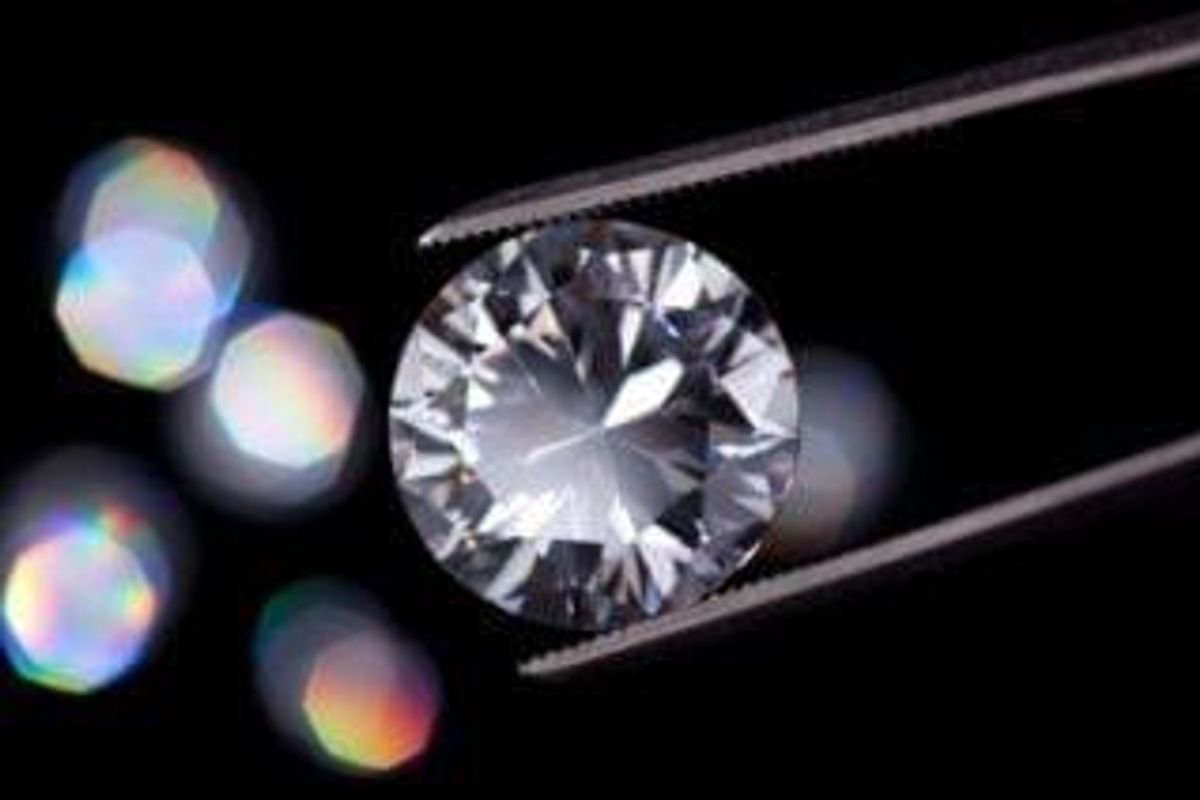
How often does one read that such-and-such a company has so many diamondiferous kimberlites in its portfolio? What is that company trying to tell (or sell) us, the non-technical audience?
By Don Duncan
How often does one read that such-and-such a company has so many diamondiferous kimberlites in its portfolio? What is that company trying to tell (or sell) us, the non-technical audience?
“Diamondiferous” is an adjective, first used in 1870 or thereabouts and is defined as:
- containing or yielding diamonds for mining
- containing diamonds
- Any substance containing diamonds, generally applied to rock or alluvial material containing diamonds, but may also refer to diamond-impregnated substances, such as the crown of a diamond-impregnated drill bit
The term could thus mean a source containing diamonds in concentrations possibly suited to mining or it could mean simply that unquantified numbers of diamonds are present. There is no distinction made at this point between macrodiamonds (in this note, the definition is diamonds larger than 0.5mm in all dimensions) and microdiamonds (smaller than 0.5mm in all dimensions).
The relationship between these two populations is rarely clear-cut and is not necessarily mutually inclusive. In a production scenario, unless the diamonds are of a significantly high value, it would be rare to recover stones (diamonds) which passed through a 1.5mm square mesh sieve. Whatever the figure used, this is the lower cut-off size and only stones greater than this size are sent for sale.
Kimberlites and diamonds
The use of the ambiguous term “diamondiferous” should not, therefore, be taken to infer that there is any positive financial implication. This lack of clarity is one loophole used by some promoters to enhance projects which should be consigned to the dustbin of economic nonstarters. To understand what the chances are of a primary diamondiferous occurrence becoming a mine, one must look at the statistics of kimberlite (and, to be fair, lamproite) discovery and exploitation.
Alluvial diamond deposits have their own peculiarities and merit their own note; they are excluded from this discussion.
How many kimberlites and lamproites have been discovered to date? The answer varies from 5000 to 6500, depending on the source used. How many of those carry a trace of diamonds – probably somewhere between 3 percent and 9 percent (~150 – ~600). How many of this subset have been or are mines?
Adding the qualification that some which could have been mines are or were not, owing to a mix of circumstances, the probable answer lies between 40 and 60.
Kimberlites and lamproites tend to occur in clusters; many clusters are barren of diamonds, other clusters may have one or two bodies with at least traces of diamond, and it takes a significant volume of work to winnow out those with economic potential. Even then, establishing the macrodiamond grade value for one of these bodies, stated in carats per hundred tonnes – and the average diamond value per carat – is a multi-million-dollar exercise. The world average odds of success, i.e. creating a mine, having proved the kimberlite does contain diamonds in reasonable quantities, lie between 1 in Investors should know
Those enterprises which simply state that they have diamondiferous kimberlites in their portfolio but do not detail what this statement means, may simply be using a catch-all term to snare the unwary investor.
The upside for asking the right questions and believing verified data before investing in this most risky of commodities is financial returns which are almost unparalleled in the minerals world. The downside of believing that the word diamondiferous is more than a simple adjective may be a significant negative financial impact.
Caveat emptor.
About the Contributor:
Don Duncan has worked in diamond exploration and mining on four continents for over thirty-five years. He is an independent consultant and a Member of the Australian Institute of Geoscientists. He’d like potential investors to understand the connotations of some of the terminology associated with diamonds before committing their funds.